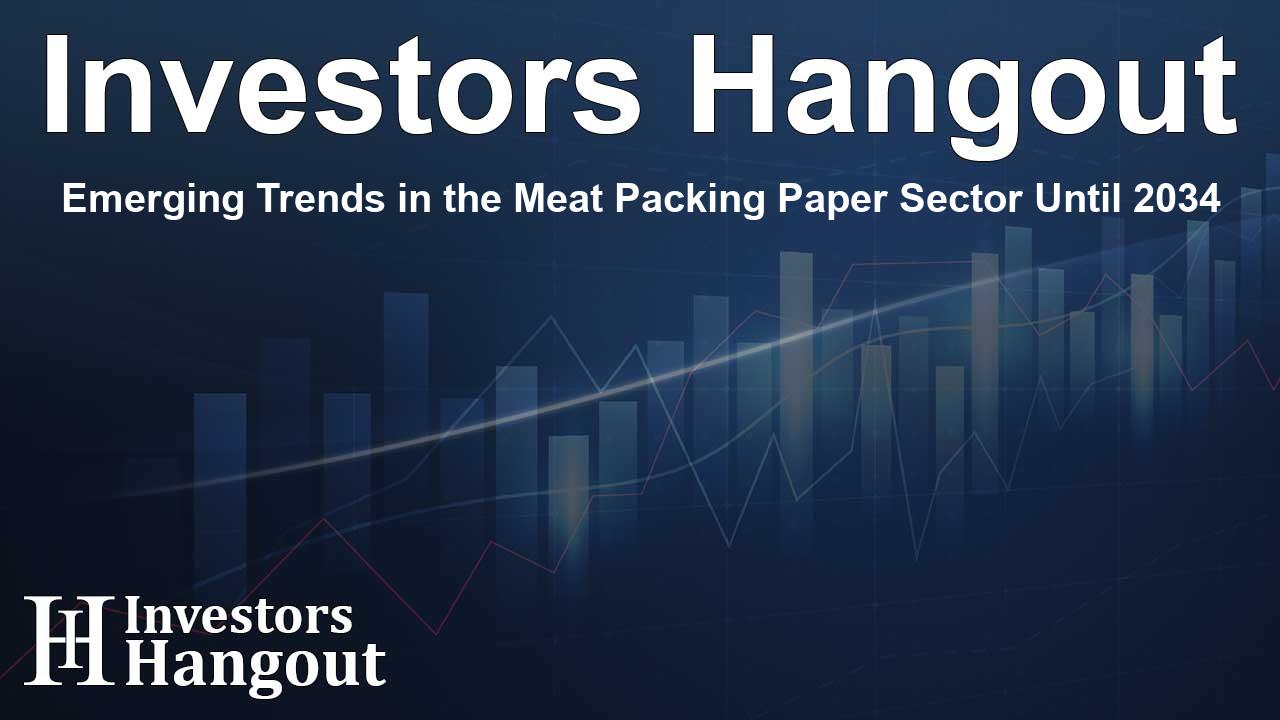Emerging Trends in the Meat Packing Paper Sector Until 2034

Understanding the Growth Dynamics of the Meat Packing Paper Market
The global meat packing paper market is set for considerable advancements in the coming years, reflecting a steady growth trajectory fueled by increasing consumer demand for safer and more sustainable packaging solutions. As consumers become more health-conscious, the necessity for high-quality meat packing materials grows ever more crucial for ensuring meat freshness during storage and transport.
Market Projections and Economic Impact
According to analysts, the meat packing paper market is predicted to grow at a compound annual growth rate (CAGR) of 4.5% from 2024 to 2034. This rise signifies a shift towards more efficient and environmentally friendly packing solutions as the industry adapts to consumer expectations. By 2034, market revenues are expected to reach approximately USD 310 million, marking a significant increase from an estimated USD 195 million in 2024.
The Role of Sustainable Practices in Market Growth
Sustainability is now at the forefront of industry initiatives. As packaging requirements evolve, companies that emphasize eco-friendly materials and reduce waste are seeing a competitive edge. The growing environmental awareness among consumers drives the demand for biodegradable and recyclable meat packing papers, significantly influencing purchasing decisions across the hotels, restaurants, and cafes (HoReCa) sector.
Innovations Paving the Way for the Future
Innovation within the meat packing sector is essential for meeting evolving regulatory standards and consumer preferences. Companies focusing on research and development for improved packaging qualities, such as enhanced moisture resistance and durability, will position themselves favorably in a competitive landscape. Cutting-edge packaging solutions will be pivotal in preserving meat quality while fulfilling environmental commitments.
The Critical Importance of Food Safety
As the market shifts towards processed and packaged meat products, stringent regulations pertaining to food safety are becoming increasingly important. Meat packing paper helps prevent contamination, ensuring meat products retain their safety and integrity throughout their shelf life. With consumer concerns surrounding food hygiene escalating, businesses that utilize high-quality packing paper are not merely complying with regulations; they are also responding directly to market demands.
Regional Insights into Market Dynamics
The meat packing paper market is not uniform across the globe, as different regions exhibit varying growth trends. In the United States, the market is projected to grow at a CAGR of 3.5%, reflecting specific consumer needs and competitive dynamics. Conversely, South Korea stands out with an impressive CAGR forecast of 5.9%, driven by innovation in smart packaging solutions.
Key Market Drivers Uncovered
- Rising Demand for Processed Meat: The global increased consumption of processed meat products propels the need for efficient packing materials.
- Food Safety Concerns: Regulations are tightening, pushing meat processors towards specialized packing materials.
- Eco-Friendly Packaging Trends: The industry’s shift towards sustainable practices is gaining momentum as companies prioritize environmental responsibility.
- Export Growth: The rise in meat exports highlights the need for compliant packaging solutions that meet international standards.
- Consumer Preference for Freshness: This trend emphasizes the significance of effective packing solutions that enhance the quality of meat products.
Competitive Landscape and Market Players
The competitive landscape is characterized by key players such as WestRock Company, Georgia-Pacific LLC, and Reynolds Consumer Products, among others. These companies are innovating packaging solutions and adapting to changing market conditions while investing in sustainability to meet consumer demands effectively. Their strategic focus is concentrating on utility, freshness, and environmental impact.
Recent Developments Shaping the Industry
Recent innovations such as the development of recyclable barrier solutions reflect industry efforts to balance performance and sustainability. This move toward advanced packaging technologies indicates a future where sustainability and efficiency are integral to success within the market.
Frequently Asked Questions
What is driving growth in the meat packing paper market?
The growth is primarily driven by increasing consumer demand for safe, sustainable, and innovative packaging solutions.
How much is the market projected to grow by 2034?
The meat packing paper market is expected to reach approximately USD 310 million by 2034, registering a CAGR of 4.5% from 2024.
What role does sustainability play in the market?
Sustainability is critical as companies focus on using eco-friendly materials, which resonate with environmentally conscious consumers.
Which regions show the highest growth potential?
South Korea exhibits significant growth potential with a projected CAGR of 5.9%, followed by the United States with 3.5%.
Who are the key players in the meat packing paper market?
Prominent players include WestRock Company, Georgia-Pacific LLC, and Reynolds Consumer Products, focusing on innovation and sustainability.
About The Author
Contact Logan Wright privately here. Or send an email with ATTN: Logan Wright as the subject to contact@investorshangout.com.
About Investors Hangout
Investors Hangout is a leading online stock forum for financial discussion and learning, offering a wide range of free tools and resources. It draws in traders of all levels, who exchange market knowledge, investigate trading tactics, and keep an eye on industry developments in real time. Featuring financial articles, stock message boards, quotes, charts, company profiles, and live news updates. Through cooperative learning and a wealth of informational resources, it helps users from novices creating their first portfolios to experts honing their techniques. Join Investors Hangout today: https://investorshangout.com/
The content of this article is based on factual, publicly available information and does not represent legal, financial, or investment advice. Investors Hangout does not offer financial advice, and the author is not a licensed financial advisor. Consult a qualified advisor before making any financial or investment decisions based on this article. This article should not be considered advice to purchase, sell, or hold any securities or other investments. If any of the material provided here is inaccurate, please contact us for corrections.
